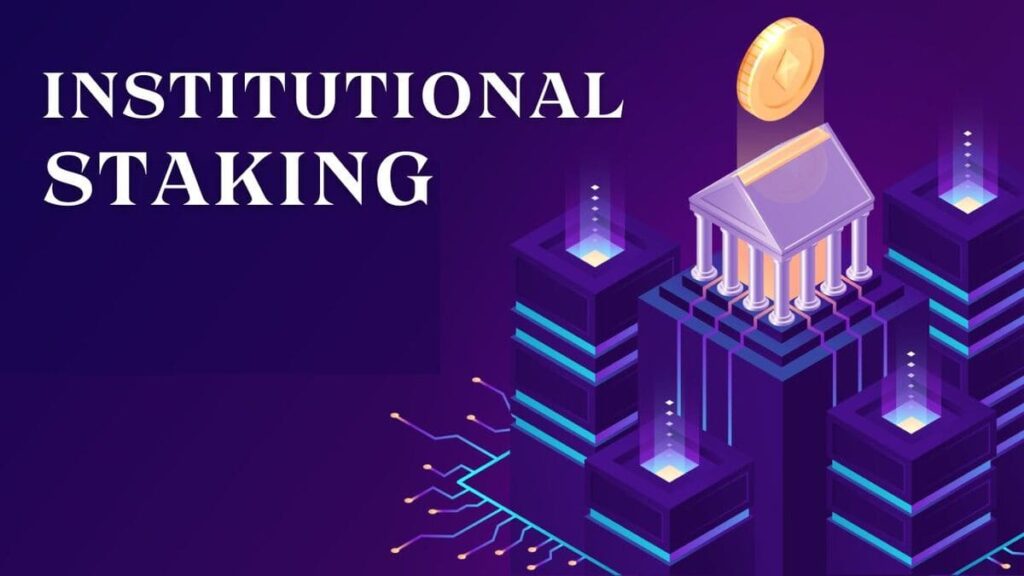TL;DR
- Institutional staking offers liquidity and security benefits to blockchain networks but raises significant risks of power centralization.
- The influence of large institutions in governance may unbalance the principles of transparency and decentralization that are core to blockchains.
- It is essential for blockchain networks to maintain a fair power distribution to ensure that institutional staking does not compromise their original purpose.
In recent years, staking has evolved from being an exclusive practice for typical blockchain users to becoming a fundamental tool for financial institutions, investment funds, and large corporations within the industry. This transition was driven primarily by the shift to Proof-of-Stake (PoS) across various networks, sparking a new debate: is institutional staking a benefit to blockchain networks or a threat to their decentralization?
Staking, at its most basic, is a process where participants lock up a certain amount of cryptocurrency to contribute to the security and consensus of a blockchain network, receiving token rewards in return. While retail users can participate relatively easily, institutional staking introduces an entirely different dynamic. Institutions can stake large sums of money, allowing them considerable influence over the governance of blockchain networks.
The Promise of Growth and Stability
From a positive perspective, institutional staking seems to offer a range of benefits. Large financial entities that participate can provide liquidity and stability to blockchain networks. Additionally, by using significant amounts of assets to secure the networks, these institutions help strengthen the security and integrity of the platforms. The rewards provide a steady stream of passive income, which is attractive to investment funds, universities, and other large organizations.

In terms of governance, institutions can play an active role in decision-making within blockchain ecosystems, promoting more efficient and stable network management. This type of participation also allows involved organizations to have a stronger voice in the future development of protocols, potentially leading to substantial and more sustainable improvements for the system.
The Danger of Centralization
However, not everything is positive. Centralization is undoubtedly one of the major risks of institutional staking. Since institutions are in a favorable position to capture a significant share of power, the distribution of network control could end up in the hands of just a few actors. This concentration phenomenon could undermine one of blockchain’s fundamental principles: decentralization. Rather than having a broad user base with a say in network decisions, a small number of institutions could monopolize power, impacting fairness and transparency across networks.
Furthermore, financial institutions participating in this process do not always share the same interests or values as smaller users. While institutional staking can improve efficiency, it could also lead to decisions aimed at maximizing short-term profits without considering long-term impacts on the community or the network itself. With greater influence in governance, institutions could change the rules to favor themselves, endangering the integrity and principles of decentralized projects.

Regulation and Market Risks
Another factor that cannot be ignored is the regulatory framework. As institutional staking becomes more popular, financial institutions must navigate complex regulations across different jurisdictions. This not only affects the overall stability of the process but can also contribute to further centralization, as larger institutions are generally better equipped to meet these requirements, putting smaller actors at a disadvantage.
Market volatility is another inherent risk, as sharp movements in the value of staked assets can affect both rewards and institutions’ participation power.
The Future of Institutional Staking?
While there is no doubt that institutional staking has the potential to enhance the efficiency and stability of blockchain networks, the question remains whether these benefits justify the risk of power centralization. The future of blockchain will depend on how we balance the needs of large institutions with decentralization principles. If blockchain networks allow a few players to control the majority of the power, they risk losing their decentralized spirit—and, therefore, their original purpose.
Ultimately, it is crucial for blockchain networks to find ways to mitigate these risks, ensuring that the system does not become dominated by corporate interests. Transparency, inclusion, and fair power distribution should remain the pillars on which governance and participation decisions in these networks are built. Only then can institutional staking truly be a benefit to the network











